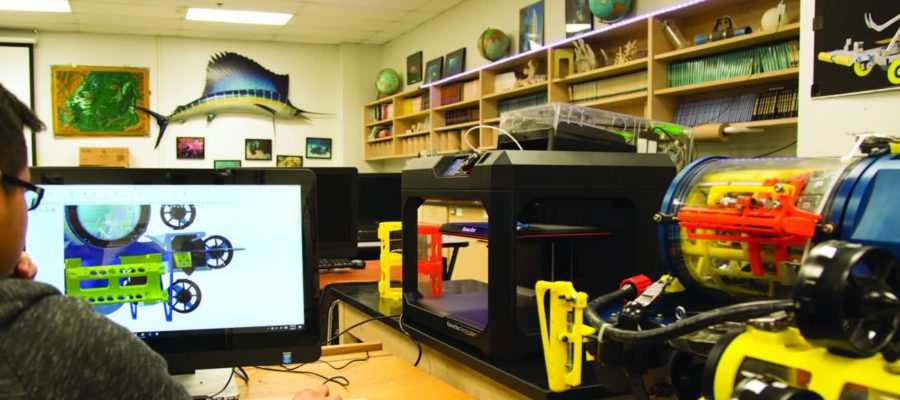Falcon Robotics, a talented team of high school students from Phoenix, Arizona have made a name for themselves by winning a national championship as underdogs in 2004. Covered on ABC Nightline, Wired Magazine and the film Spare Parts in 2015, the team shocked the STEM establishment with their Cinderella story. Today, Falcon Robotics is entering robotic submarine competitions like RoboSub, sponsored by the Office of Naval Research.
Using MakerBot 3D printers, the team is able to learn new skills while prototyping parts at a breakneck pace. Their coach, Faridodin “Fredi” Lajvardi says, “different teams collaborate to design things like navigation software or propulsion systems, solving smaller problems, then fit them together to solve the broader challenges set out by the competition.”
Divided into 4 teams (3D design, mechanical, software & marketing), the team uses a computer lab that hosts a CNC machine and 3 MakerBot 3D printers. Before they had their own 3D printers, various robot parts had to be made from metal at a local machine shop or outsourced to a 3D printing service. Although the parts worked as needed, outsourcing the output of their designs failed to give students the level of tangible experience and feedback they needed. Add in the hefty cost and time delays of outsourcing, the team was forced to make adjustments to their production.
Once the students had access to in-house prototyping with MakerBot 3D printers, they found they could deliver physical objects easily and quickly. Coach Fredi elaborates, “the reduction in time and skill needed to create objects increased the students’ learning cycles. They are now able to jump right in again and design modifications or go on to new challenges.”
With MakerBot, classes learn like students but perform like professionals. Falcon Robotics was able to learn faster, enhance their STEM skills, and understand broader problem-solving skills- while tackling professional level rapid prototyping and engineering projects. Additive manufacturing technology has proved to be an invaluable tool for improving student engagement and unlocking their potential as dynamic and critical thinkers.

